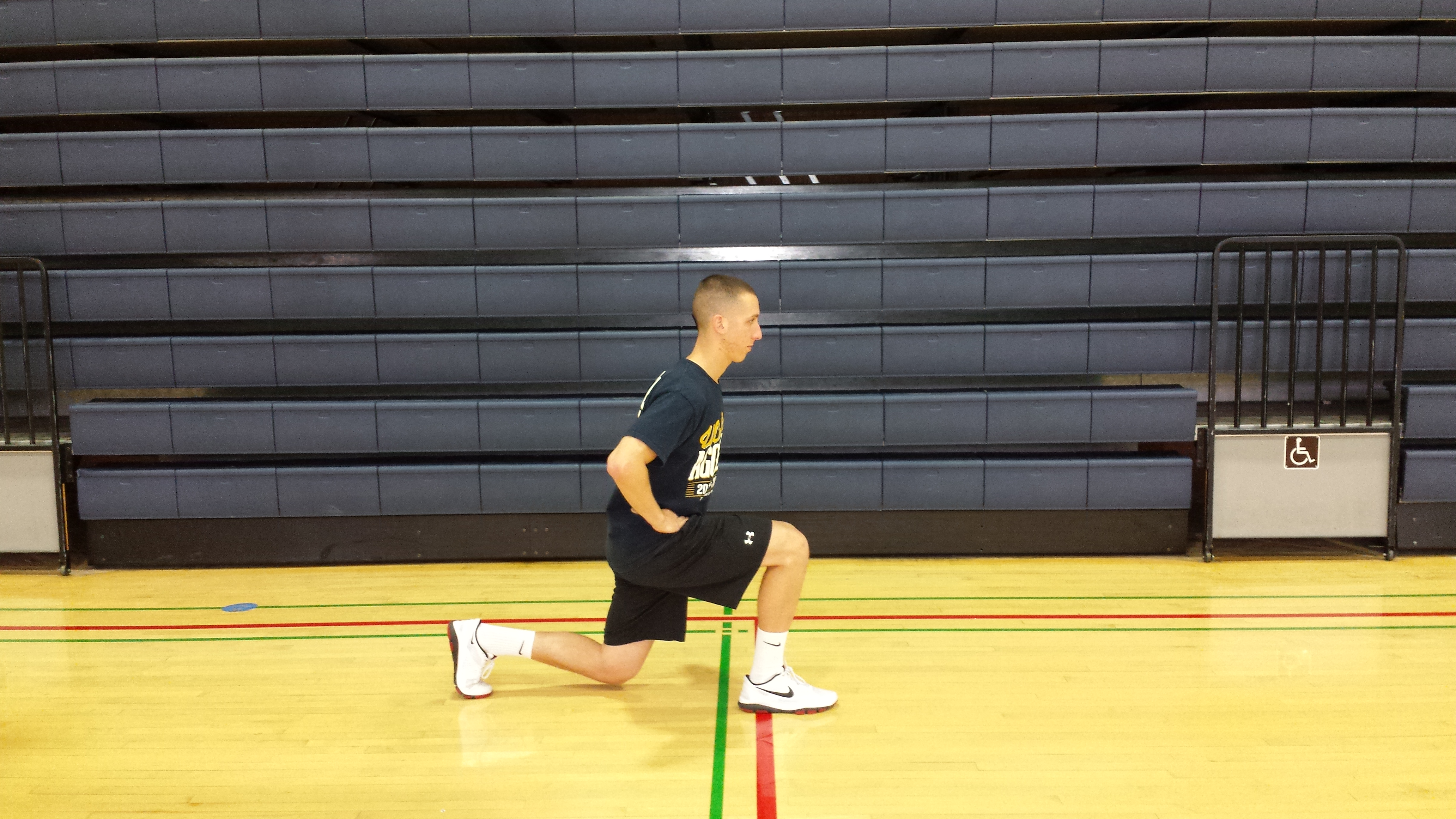Introduction to Forward Lunges:
The Forward Lunge is a multi-joint exercise that is used for injury prevention, injury rehabilitation, and improving sports performance. A lunge can be done as a bodyweight exercise, with weights, or for plyometric training (jump or reactive training) exercise. Performing lunges strengthens the muscles crossing the hip, knee, ankle, and helps improve balance and core stability.
Common Recommendations for Proper Lunge Technique:
The American Council on Exercise (ACE) recommends the following technique for lunges:
Step forward and slowly lower your body until your front thigh is parallel with the ground and your lower leg is leaning slightly forward. Hips should be moving primarily downward. Avoid wobbling and driving hips forward. Keep slight forward bend at hips and maintain straight back. To return to standing, push off by activating your “thigh and butt muscles” to return to an upright standing position.
By stopping before your knee hits the ground, you force yourself to use your muscles to control yourself through the movement and you avoid the risk of bruising your knee. Changing your step length and weight distribution can alter muscle activation. Additionally, landing and keeping your weight on your midfoot mimics most athletic activity and decreases the load on your PCL.
You may also have heard the recommendation “don’t let your knee go past your toes.” This is a common recommendation advocated by many, but with little supporting evidence.
Evidence Based Recommendations:
We reviewed the scientific literature and performed anatomical and biomechanical analyses to evaluate the effects of various lunge techniques on muscle, ligament, and bone loading. Comparisons of different techniques revealed that bodyweight lunges, regardless of whether or not the front knee goes beyond the toes, do not generate sufficient forces to damage any knee structures, but caution should be taken when performing weighted lunges. Therefore, you can use your toes as a general guideline for knee position, but not as a rigid endpoint for your lunge, as optimal stride length and knee position will change with anatomical variation and muscle strengthening goals.
Conclusions:
Lunges can be used for injury rehabilitation, injury prevention, and improving various types of performance by improving leg and core strength. Walking lunges can improve hamstring strength and jumping lunges can improve sprint performance. Rehabilitation programs, particularly following an anterior cruciate ligament (ACL) or posterior cruciate ligament (PCL) reconstruction, often incorporate lunges because they strengthen the muscles around the knee and strengthen the core because they require maintaining balance and posture.
Many people follow the lunge technique guideline that suggests not allowing the front knee to move beyond the toes. However, based on our findings, we can recommend bodyweight forward lunges of short and long step lengths with the front knee ranging from slightly behind the toes to slightly in front of the toes. Due to anatomical variation as well as variation in PCL loads across different techniques of lunges, you should use your toes as a general guideline to avoid excess loading of the PCL, but not as a rigid endpoint for your lunge, as optimal stride length and knee position will change with anatomical variation and muscle strengthening goals. Landing and keeping your weight on your midfoot during lunges is the most applicable to many athletic activities and helps minimize PCL loading. Additionally, each athlete’s sport, flexibility, and balance should be considered when determining the step length, body position, and speed of the lunge to optimize the muscle activation and speed of the movement to fit the athlete’s sport.
Performing lunges incorrectly can result in a variety of injuries including strains of hip, knee, and ankle muscles, patellofemoral pain, hip or knee bursitis, and Iliotibial (IT) Band Syndrome. These injuries can be caused by improper activation of muscles, irritation of various structures due to anatomy or improper form, overuse, or lack of a proper warm up.
If you experience knee pain without an underlying condition, adjusting your form (step length, weight distribution, front knee position, etc.) may alleviate the pain. However, if you have a recent knee injury or persistent condition, such as a knee sprain, meniscus tear, muscle strain, tendinitis, IT Band Syndrome, bursitis, arthritis or patellofemoral pain, do not perform lunges until you have been cleared by a health care professional. If you experience pain in or around your knee joint, consult your health care provider before continuing to do lunges.
